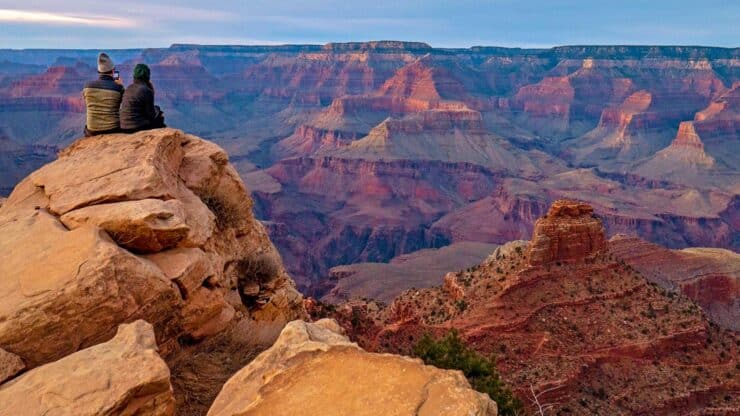

The Ooh Ahh Point hike is a great beginner's hike that lets you get away from the South Rim and spend some time on the trail. Each step of the hike offers breathtaking views, culminating at Ooh Ahh Point where you get to see panoramas, including the little-visited eastern Grand Canyon. The trail is safe and easy to follow, so if you were thinking of trying a Grand Canyon trail out, this one is for you.
- Turn-by-Turn Hike Directions & Video
- What to Expect on the Hike to Ooh Ahh Point
- Tips on Weather, Parking, and Planning for the Hike
Don't forget to check out my Grand Canyon hiking tips here!
Where is the South Kaibab Trail?
The South Kaibab Trail is located by Yaki Point on the South Rim of the Grand Canyon, about a 10 minute drive from the Grand Canyon Visitor's Center. But you can't park at the trailhead, which is closed to private vehicles.
Shuttle Bus to South Kaibab Trail

- Take the Orange Shuttle Bus from several parking lots around Grand Canyon Village like the Visitor's Center, which has a lot of parking. The bus runs frequently and isn't so bad, but it can get busy at times.
- Take the Hiker's Express Shuttle Bus which is geared toward hikers leaving early to do hikes like Rim to Rim, but can be used by anyone. Doing the hike early in the morning at sunrise will give you the most pleasant experience, namely sunrise colors, cooler temperatures, and fewer crowds.
You can also take a taxi to the trailhead. Call Xanterra Taxi Service (24 hours) 928-638-2631
Where Can I Park for the South Kaibab Trail?
If you don't want to take the shuttle bus, you can park a short walk away from the trailhead. Parking in these areas is legal, but you have to walk about 15-20 minutes on an easy path or roadside to get to the South Kaibab.
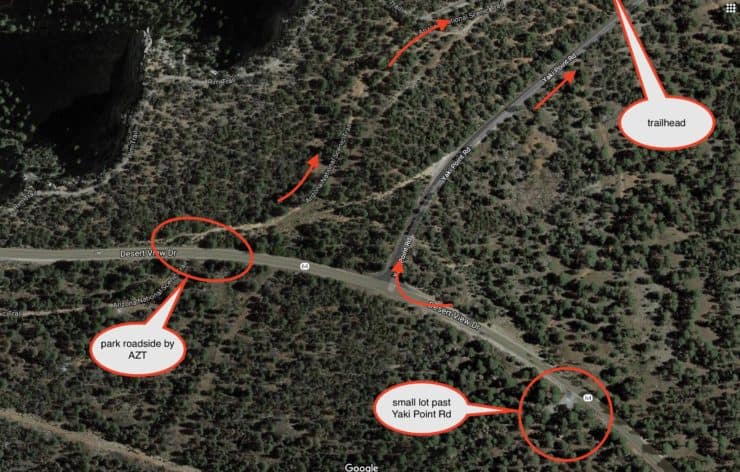
- Park on the (wide) roadside around the area where the Arizona Trail (AZT) intersects Rt 64/Desert View Drive. From there, you walk up the AZT to the Rim Trail and then a short distance to the trailhead. There are a lot of small use trails between the parking area and Rim Trail. Don't worry, they all head to the Rim Trail or road to the trailhead.
- There's a lot just east of Yaki Point Rd. You can park here and then walk on the side of the road to the trailhead. There's no private traffic on Yaki Point Rd, so it's not as crazy as walking along Rt 64.
Gear for the Hike
This is a hike appropriate for beginners, but you shouldn't take that as a sign to wear jeans and t-shirt on it. I'd recommend hiking or fitness clothing and footwear to do this hike. The most important thing is to bring water; there is no water on the trail. Bring at least 1L of water and a snack in case you need energy on the way out.
The weather in the Grand Canyon can be extreme. In the winter, bitter cold, ice, and snow is not uncommon. So pay close attention to the weather for Grand Canyon Village. If there is snow, the South Kaibab Trail can be covered. In those conditions micro-spikes and trekking poles are a must. There can be ice on the upper parts of the trail.
And of course, in the summer, it gets hot. There's not much shade on the hike, so protect yourself from the sun. The temperature rises about 5.5F for every 1,000 feet that you descend. So you can expect Cedar Ridge to be about 6F warmer than the trailhead at the South Rim. In the hot months of summer, this hike is not a good idea during midday.
Gear That I Love Right Now
Nothing is sponsored or promoted, just the actual gear that I use.
Ooh Ahh Point Trail Maps
The South Kaibab Trail is what the Parks Service calls a corridor trail. The corridor trails are heavily used and actively maintained. The South Kaibab Trail is the second most popular trail after the Bright Angel. It's built with a standard gradient (overall) of 10% and has a standard width of 4 feet wide. What that means in practical terms is that, while it's a tough trail, it's never too steep and never so narrow that you're walking on a precipice.
Overview Map

Interactive Map
How Will You Navigate?
Mules on the South Kaibab Trail
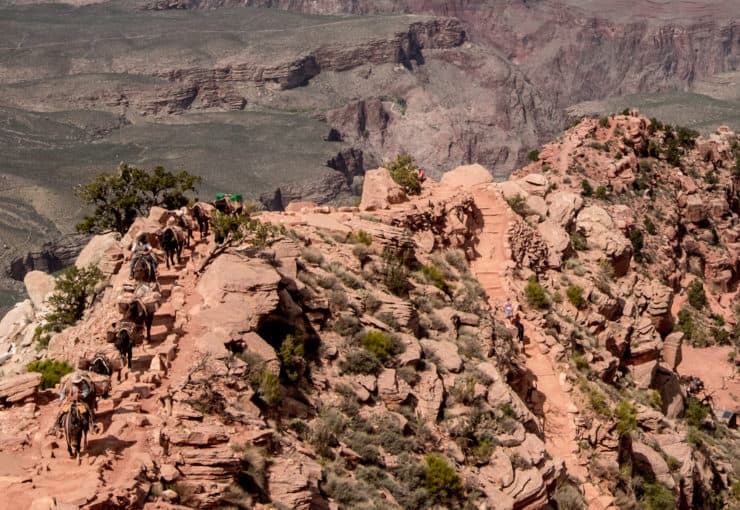
Okay, so there's good news and bad news about mules on the South Kaibab Trail. The bad news is that you might have to deal with them, the good news is that there are nowhere near as many mules here as there are on the Bright Angel Trail. The mules on the South Kaibab only supply (and haul out the trash) for Phantom Ranch; there are no tourist rides here. The mules leave at variable times, usually around mid-morning. A train leaves from Phantom Ranch around the same time. When I do the hike to Ooh Ahh Point at sunrise, I've never had to pass mules in either direction.
If you are passing mules head-on, stand to the side of the trail and follow the mule handler's instructions. It can be scary to pass mules on a narrow trail, but they do it all the time, so don't sweat it. If you need to overtake the mules, it's a bit tougher. You'll be stuck behind them dodging poop until the handler lets you pass.
Mules aren't aggressive, but they can bite. Keep your hands to yourself. Don't try to pet or feed the mules.
How To Hike to Ooh Ahh Point
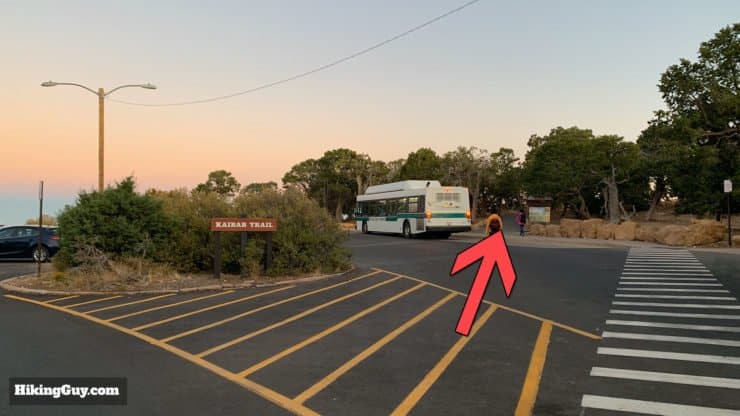
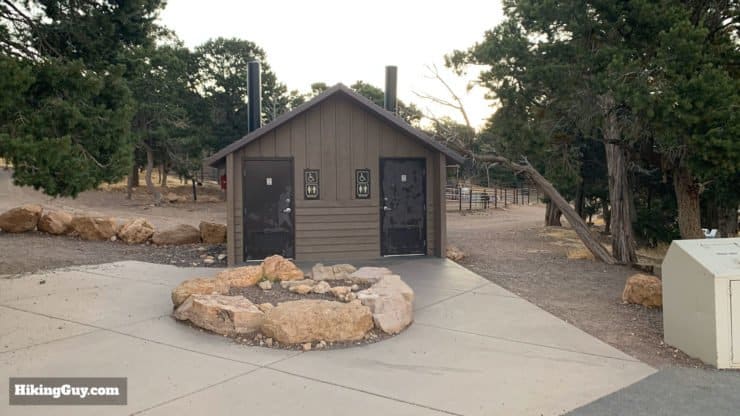
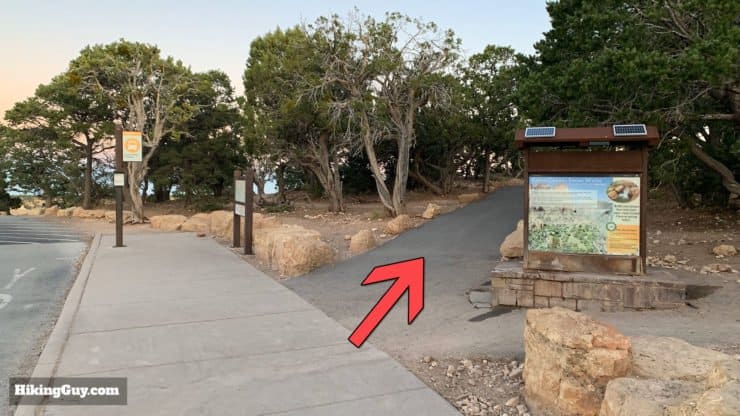
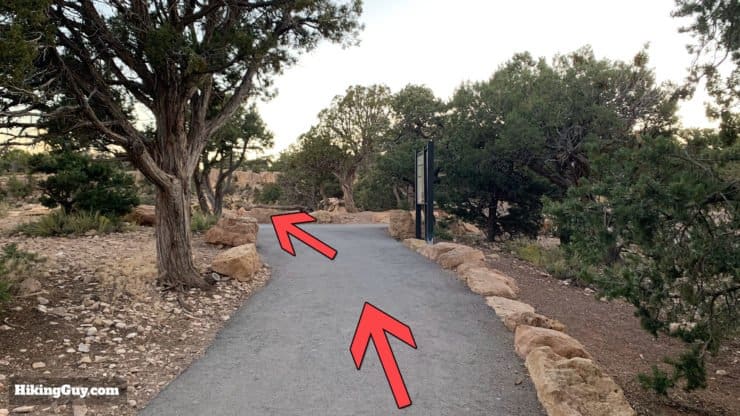
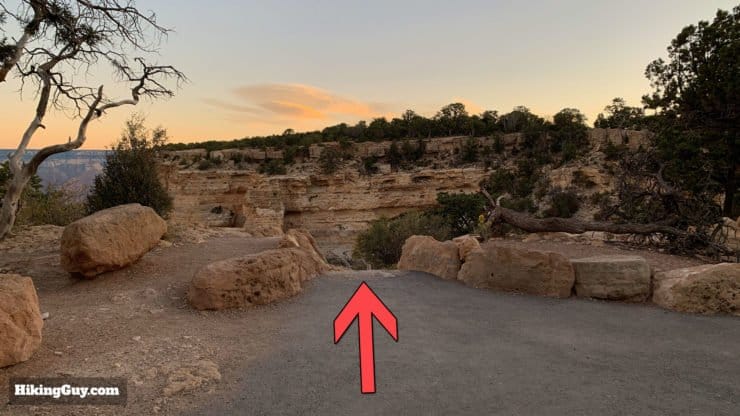
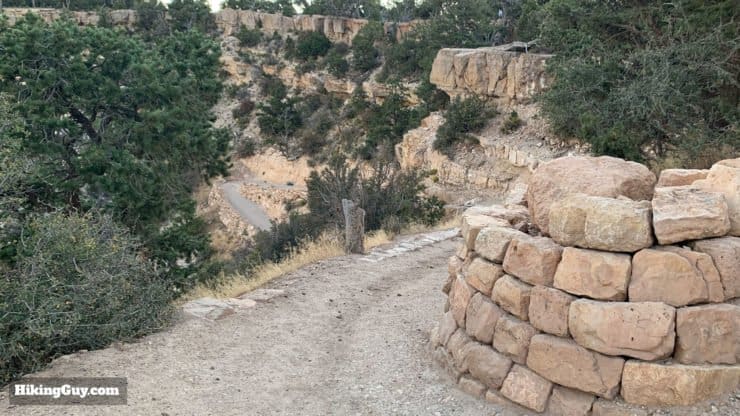
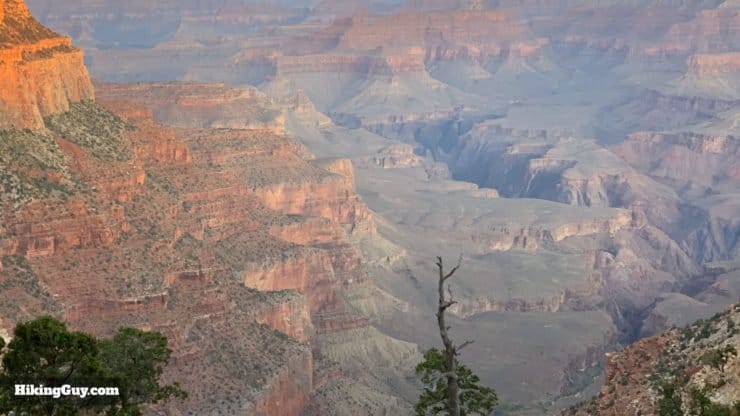
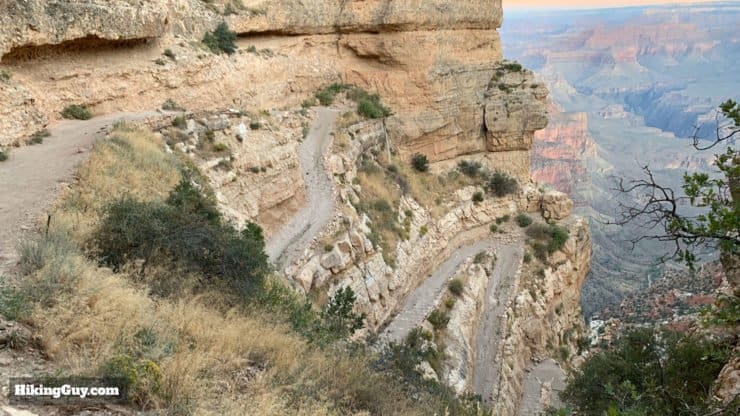
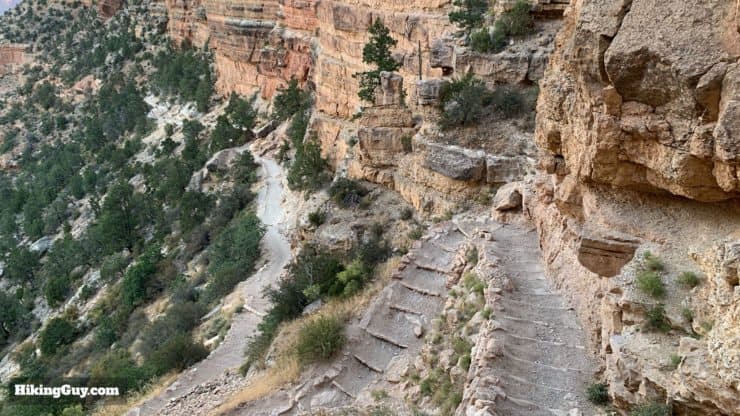
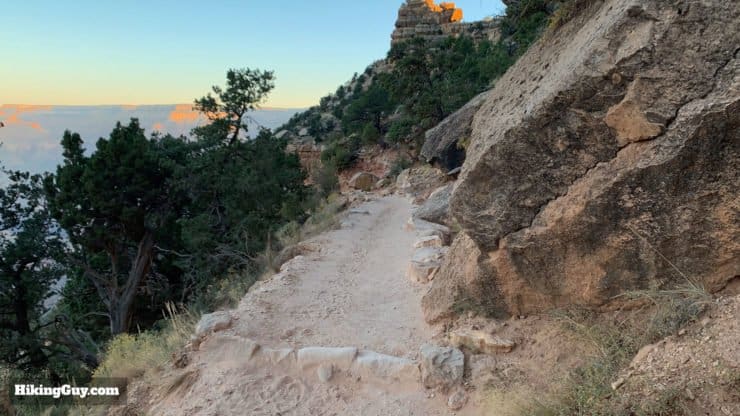

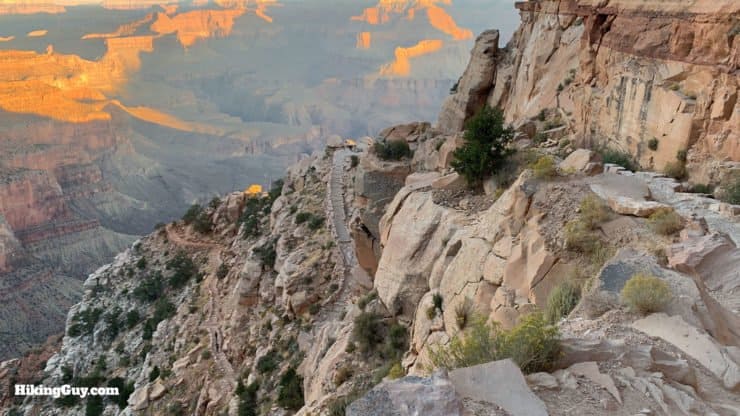
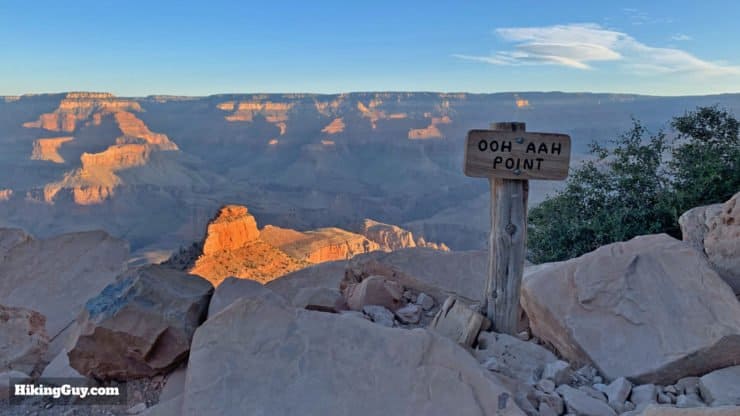
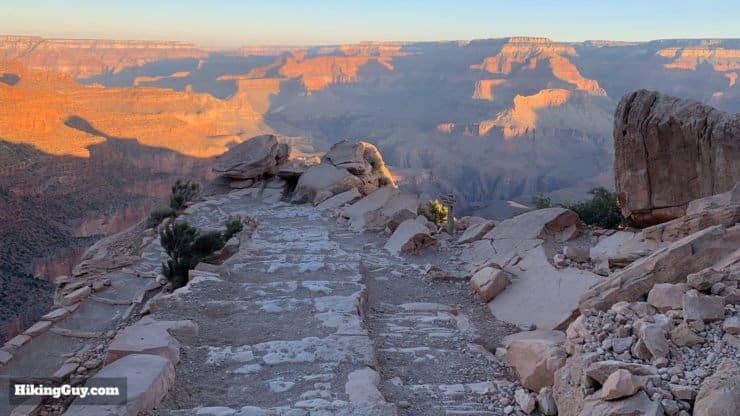
Once you're done at Ooh Ahh Point, simply turn around and hike back up. Most folks hike back up at about half the speed that they go down.
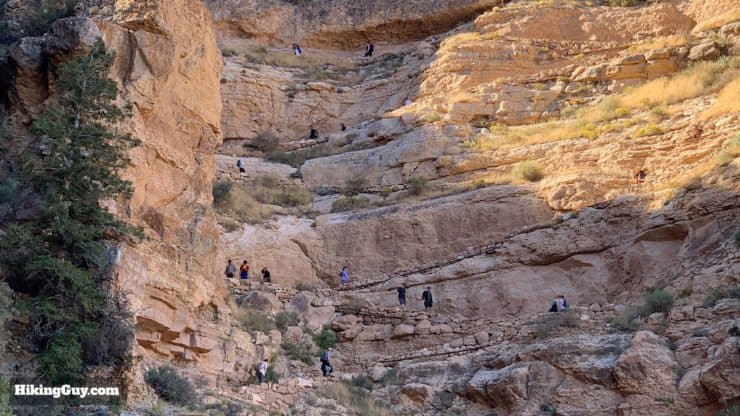
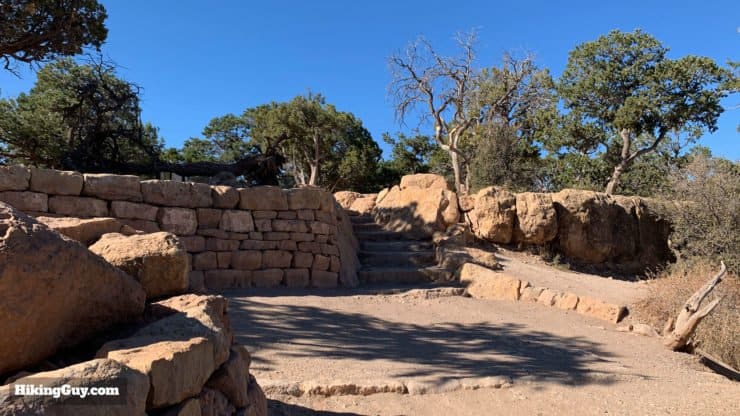
Need More Info?
- Have a question about the guide or want to see what other people are saying/asking? View the Youtube comments for this video. Leave a comment and I will do my best to respond.
- When planning, always check the park website and social media to make sure the trails are open. Similarly, check the weather and road conditions.
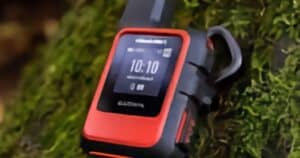
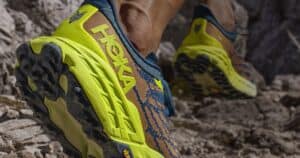
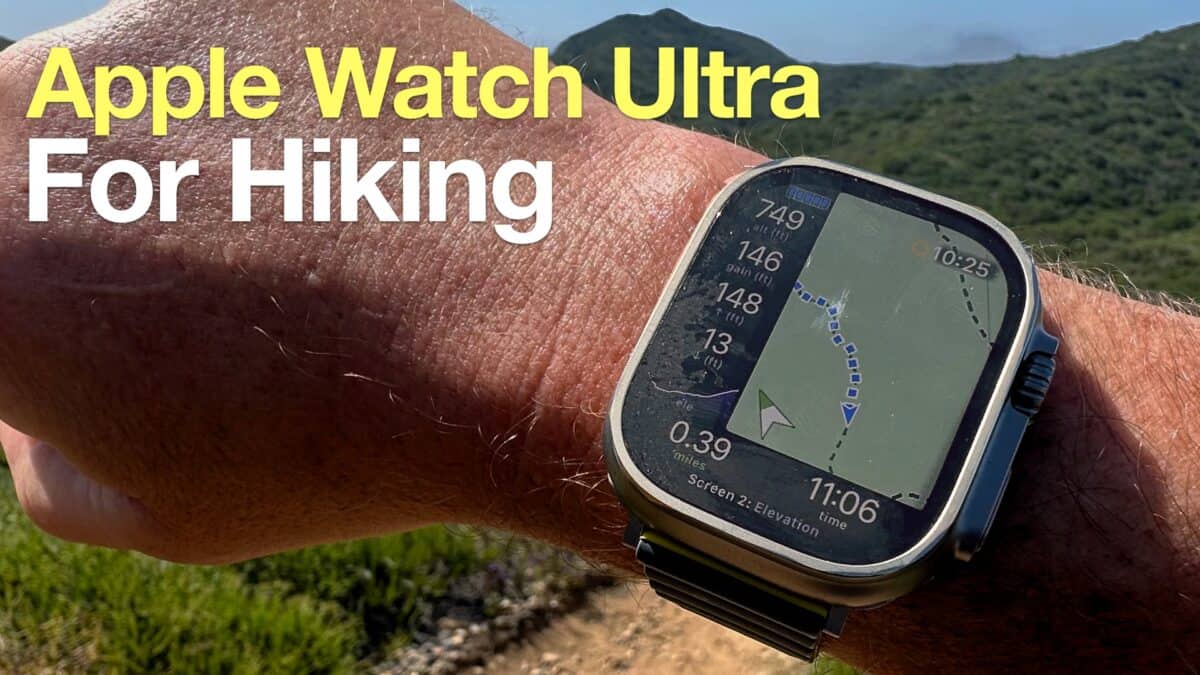 Using the Apple Watch for Hiking
Using the Apple Watch for Hiking Garmin Fenix 7 & Epix Review For Hikers
Garmin Fenix 7 & Epix Review For Hikers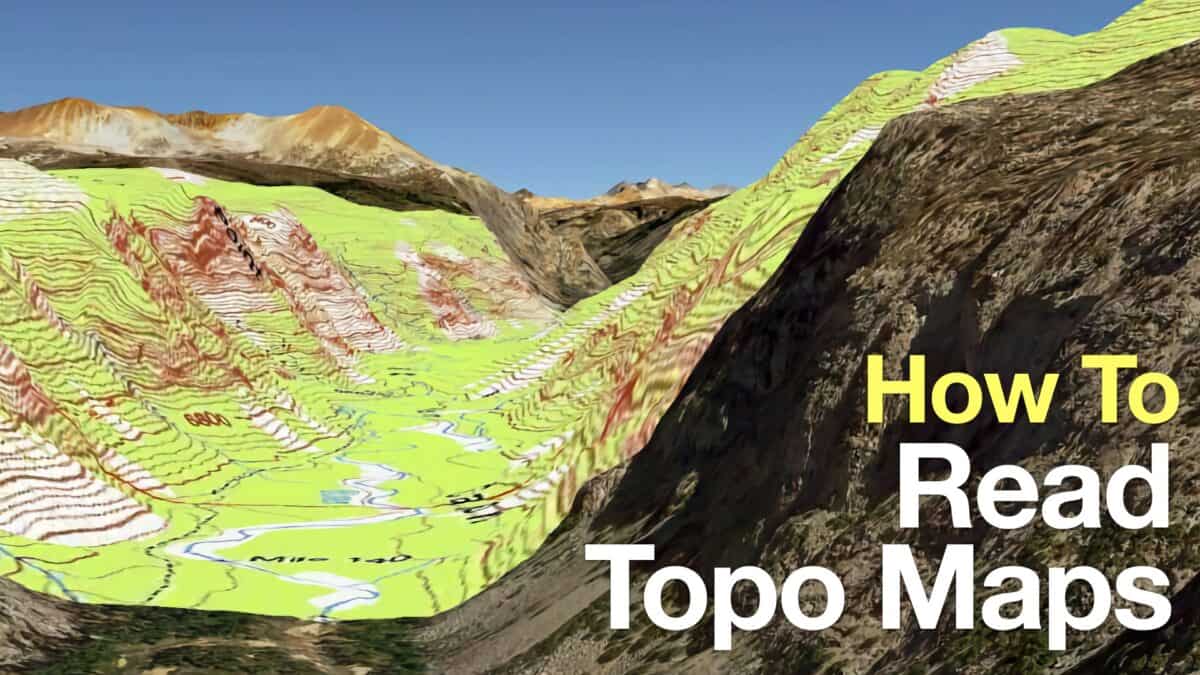 How To Read a Topographic Map
How To Read a Topographic Map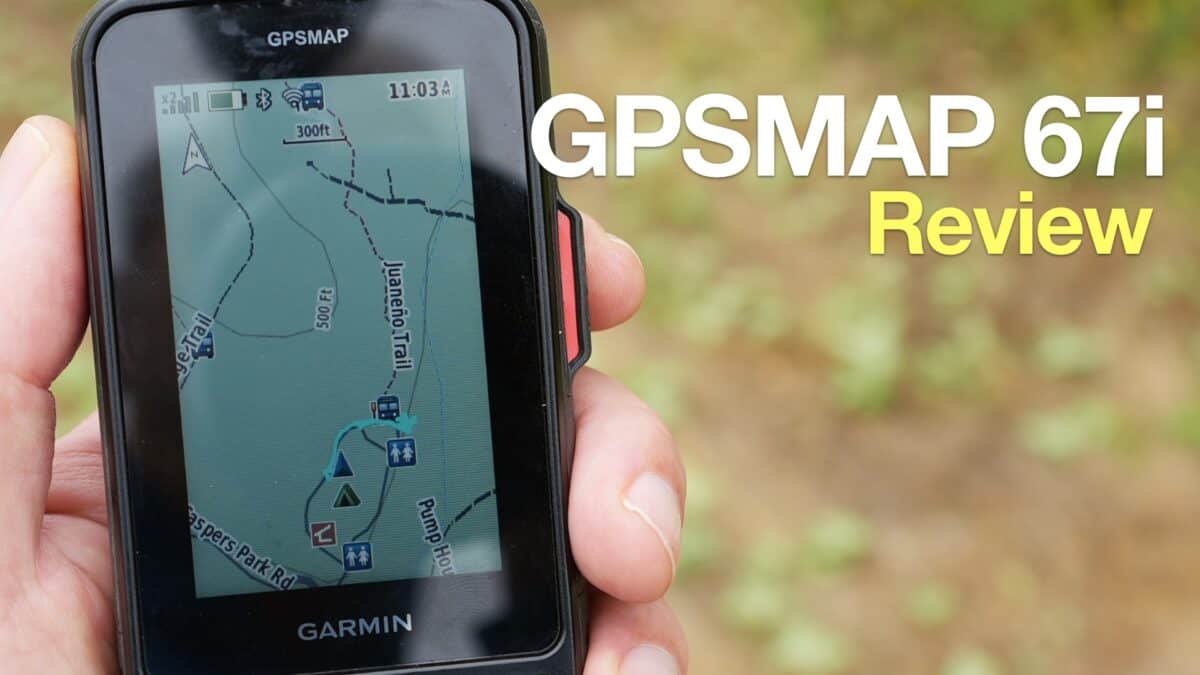 Garmin GPSMAP 67i Review
Garmin GPSMAP 67i Review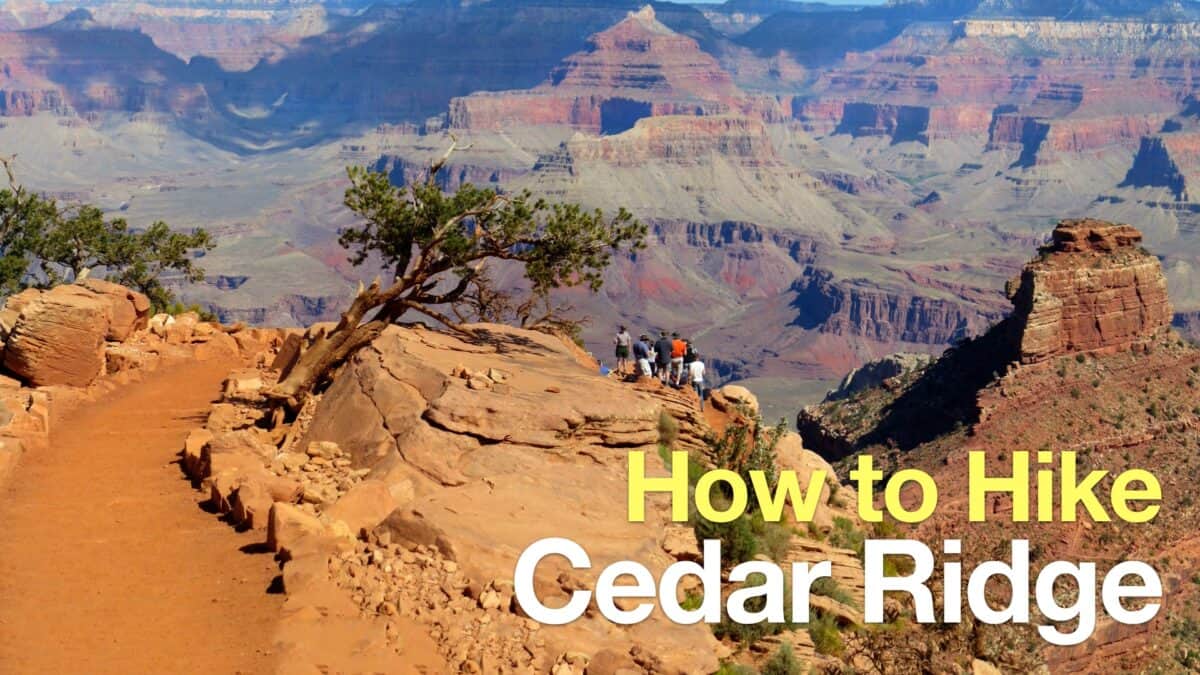 Cedar Ridge Trail
Cedar Ridge Trail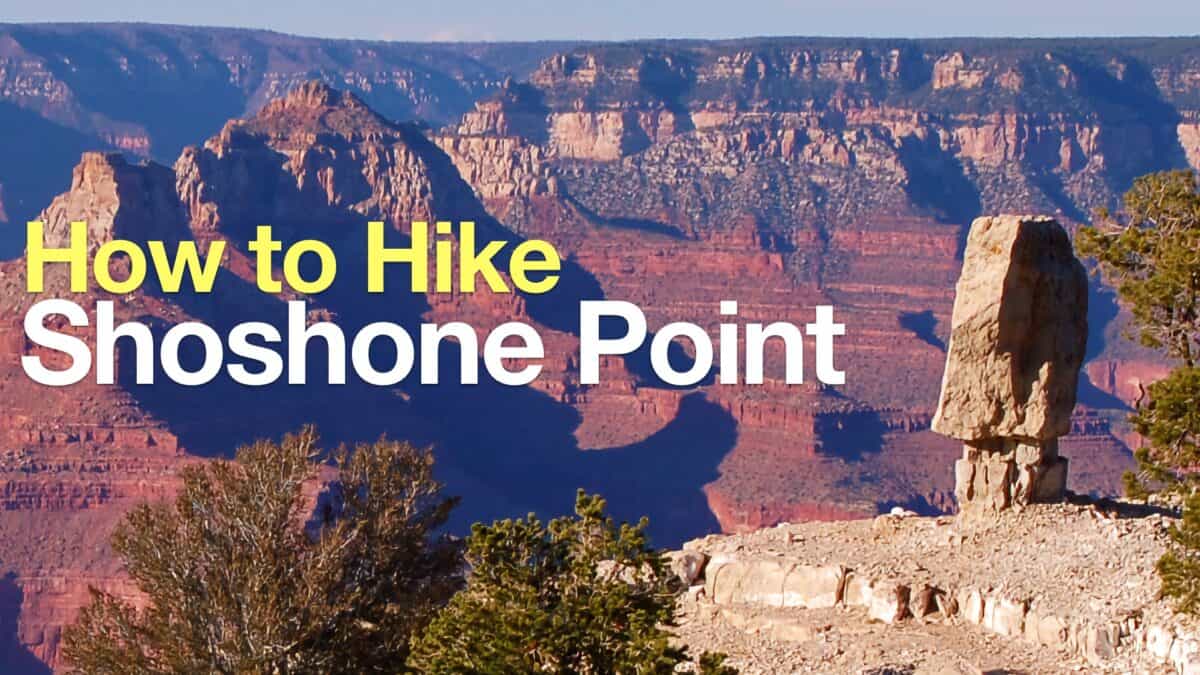 Hike the Shoshone Point Trail
Hike the Shoshone Point Trail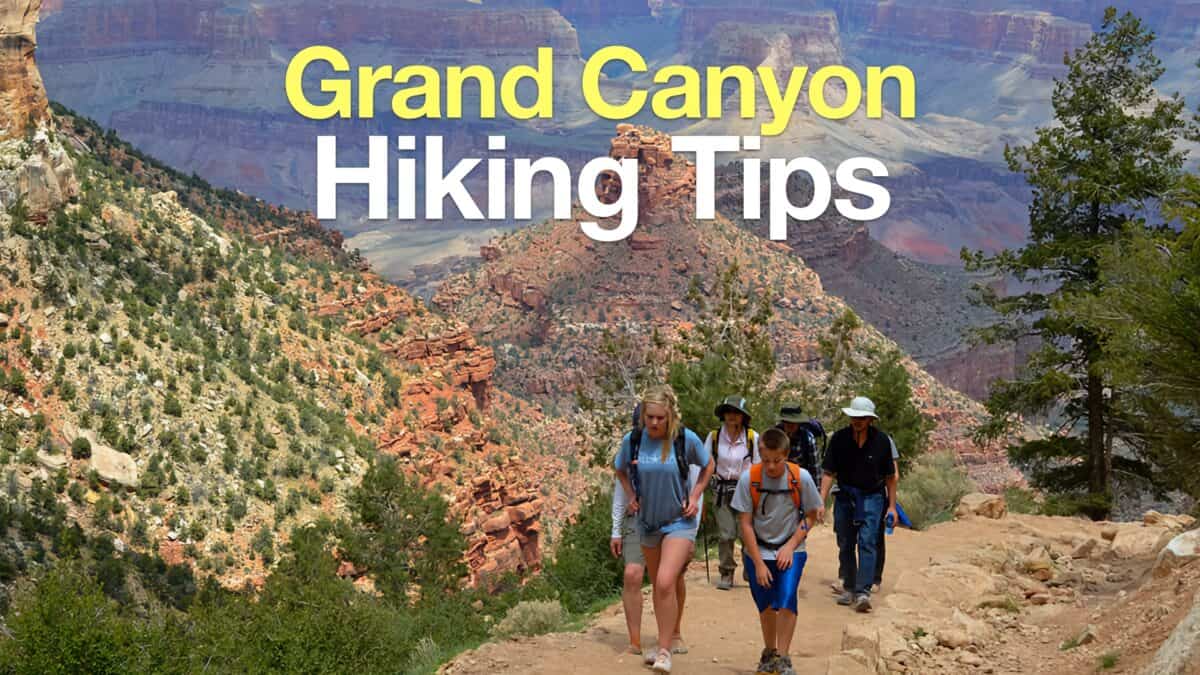 Grand Canyon Hiking Tips
Grand Canyon Hiking Tips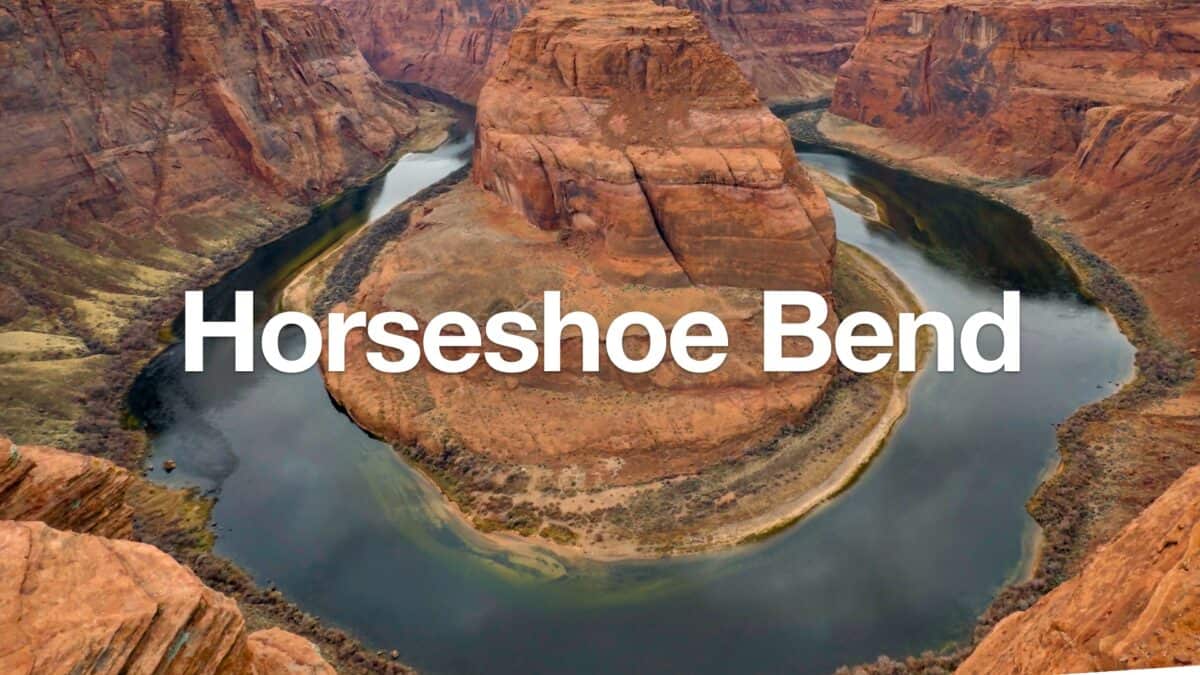 Horseshoe Bend Hike (Arizona)
Horseshoe Bend Hike (Arizona) Grand Canyon Hikes
Grand Canyon Hikes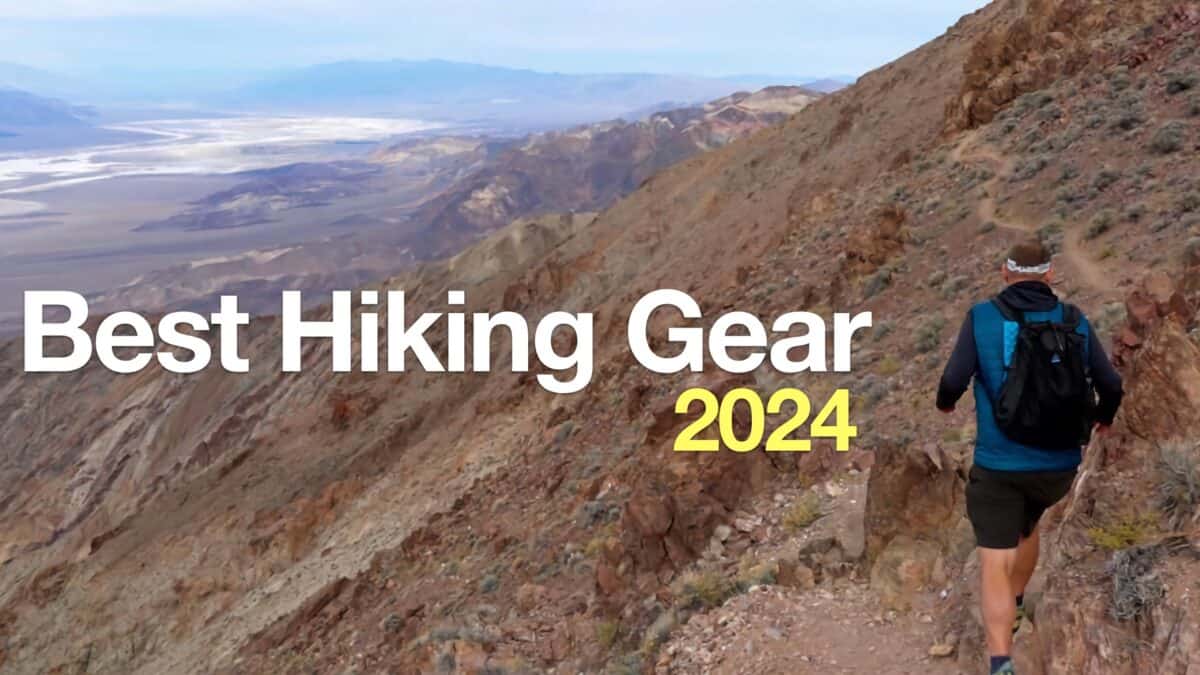 Best Hiking Gear 2024
Best Hiking Gear 2024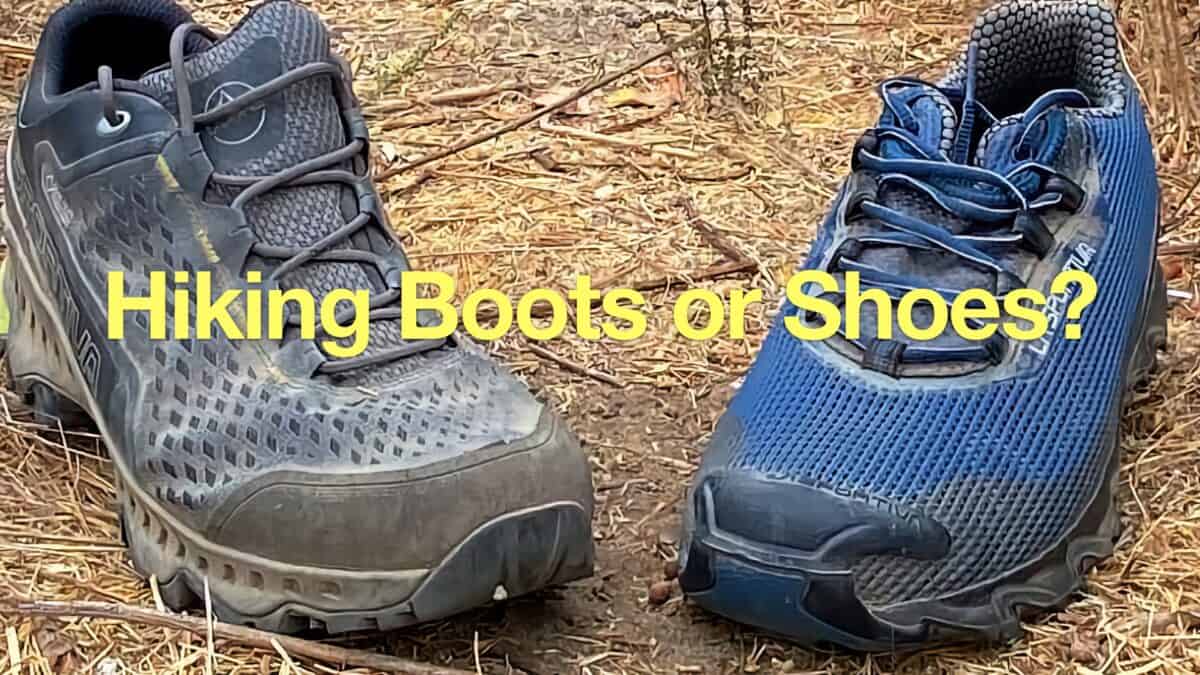 Hiking Boots or Shoes: Do I Really Need Hiking Boots?
Hiking Boots or Shoes: Do I Really Need Hiking Boots? When to Hit SOS on inReach
When to Hit SOS on inReach